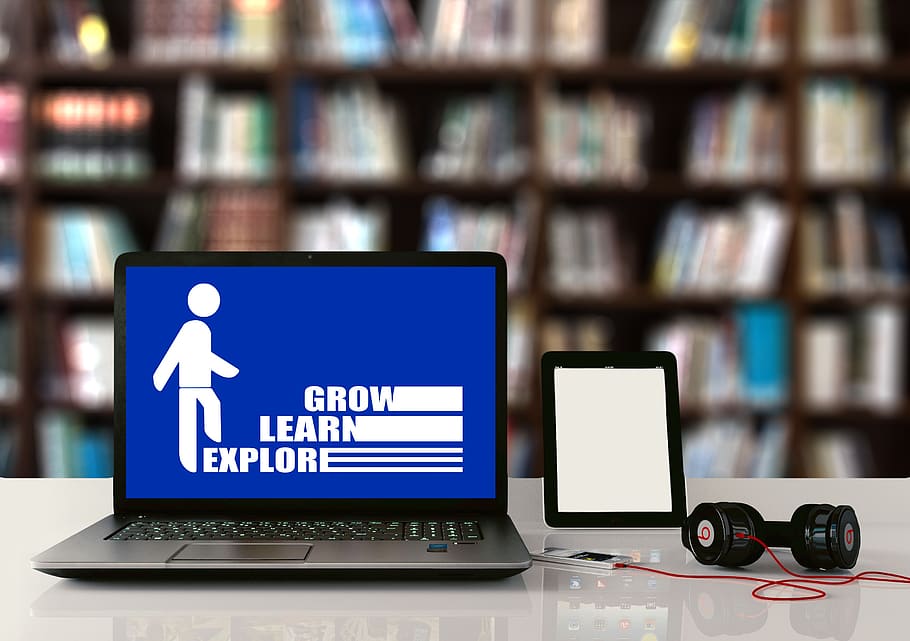‘Quality Education’ has been identified as one of the key developmental issues by the United Nations and thus forms an integral part of its Sustainable Development Goals (SDGs). These global goals define the roadmap for a better world by 2030. Given that education is important for the socio-economic development of a country, from the time of existence of the Millennium Development Goals, and later the SDGs, positive efforts have been made by Governments of developing nations in improving their outreach and education standards. This progress is being jeopardized due to the global lockdown and closing of educational institutions with the onset of COVID-19. Technology has come to play a crucial role by bridging gaps and making education more accessible to students during these times.
Technology – A Key Enabler for Education
According to UNESCO’s Global Education and Monitoring Report, 91% of the global student population spread across 194 countries got affected due to closure of schools and universities at the peak of lockdown period in April 2020. Tech-based interventions at all levels – early childhood education, primary to secondary schools as well as universities received a major boost during this period. Educational institutions were quick to adapt to online formats for learning even as adequate internet connection, equipment and lack of training remained their major barriers. The scenario also paved way for innovations that bridged these gaps with volunteering support pouring in to connect with students virtually and teach them, especially the ones vulnerable to fall out of the education system. Online classes from such ‘Learn from Home (LFH)’ models were broadcasted through local channels to provide access to maximum children, especially to those who do not have access to the internet in rural and lesser privileged sections of the society. Teachers across the world became used to engaging students remotely, while they missed their eye-to-eye contact and physical classroom energy.
Last year, the Government of India brought support to Technology-Based Incubators within the corporate social responsibility (CSR) ambit. This augmented investments in technical research and facilitated state-of-the-art infrastructure for young minds that will serve as a test-bed for innovative solutions to benefit the society in the post-COVID-19 era.
Making Learning Inclusive
As per the United Nations’ Sustainable Development Goals Report 2020, remote learning programs remain out of reach for at least 500 million children across the globe. Of these, children from rural areas and those with special abilities are the worst affected. To ensure inclusive learning in remote areas where internet connectivity and electricity is poor and sporadic, Ministry of Human Resource, Government of India introduced DIKSHA (Digital Infrastructure for Knowledge Sharing) with a vision of ‘one nation; one digital platform’ for school education. The platform provides access to e-content based curriculums like QR coded Energized Textbooks (ETBs) and training courses for teachers. For students with visual and hearing challenges, a Direct to Home (DTH) channel was introduced with study material developed in sign language and is available on YouTube, as well.
At places where the government has not reached yet, the gap is being filled by corporate CSR programs of providing laptops preloaded with academic software, providing requisite infrastructure, video conferencing tools, and digital rich content that can be customized to meet the needs of all learners.
Improves Governance
Digital technologies will penetrate almost every domain in the post COVID world. Dependency on technologies like the Internet of Things, Artificial Intelligence, Artificial/Virtual Reality will see an all-time high. Their impact on education, healthcare, media, entertainment and governance systems is already evident. This move of integrating technology to redefine the way we spend an average day is also bringing in better practices that indicate some of the older methods would be discontinued forever.
For instance, in the education sector moving to the digital ways of working has improved governance levels among institutions who are now able to allocate more time towards core activities. Administrative aspects such as automation of faculty and student attendance when they join on digital platforms, online content sharing and grading systems are saving time in monitoring and bringing in more transparency. Availability of adequate and reliable data from every level of educational processes has been one of the impediments in policymaking. Another advantage of these new ways is better capturing and analysis of grassroots information as these data gaps are addressed.
Promotes Well Being
Studies are forecasting that the wellbeing of millions of children and youth will be affected by the crisis – lack of access to mid-day meals provided in schools which impacts nutrition for a large share of the population, job losses, psychological effects of social distancing, a warning sign for future health problems.
Technology encourages the opportunity by connecting people from across the world. As people realized the importance of relationships during physical social distancing, they connected virtually with family, friends and acquaintances even more during the lockdown period. Online parties, home fitness programs and virtual volunteering for social and environmental causes gained much traction. Digital platforms enabled students to learn anytime anywhere. Many companies ensured business continuity by offering work-from-home (WFH) opportunities as far as they could, even if it required revamping their operational models. Offering students opportunity for virtual internships and seamless employee onboarding are other innovation of the COVID times. This metamorphosis rendered physical distance irrelevant while also saving travel time and enabling people to spend quality moments with self and family members.
Even though technology offers limitless opportunities for learning and provides valuable avenues for communication and socialization, it also exposes its users to vulnerabilities related to privacy, security and harmful online content. Smartphones accompanied with good internet speed and connectivity has enabled people across the world to download content seamlessly. Responsible usage of technology would not only overcome these challenges but also reveal the best of what it has to offer. It would also enable our education system is becoming more equitable and transparent. This tech enablement of future generations equipped with soft skills sensitization would define leaders of the post-covid-19 sustainable world.
Views of the author are personal and do not necessarily represent the website’s views.
 Shipra Sharma heads Corporate Social Responsibility and Sustainability at Larsen & Toubro Infotech, leading poverty alleviation programs in marginalized communities through better education, livelihood generation and women empowerment programs. Her role in leading Sustainability function involves creating strategies for low carbon business way of working and reporting as a responsible corporate citizen.
Shipra Sharma heads Corporate Social Responsibility and Sustainability at Larsen & Toubro Infotech, leading poverty alleviation programs in marginalized communities through better education, livelihood generation and women empowerment programs. Her role in leading Sustainability function involves creating strategies for low carbon business way of working and reporting as a responsible corporate citizen.
To read more articles by the author, click here.
Thank you for reading the column. Please drop a line and help us do better.
Regards,
The CSR Journal Team

